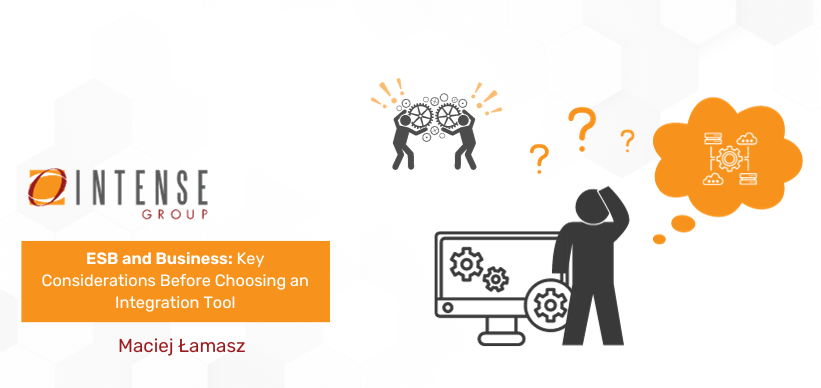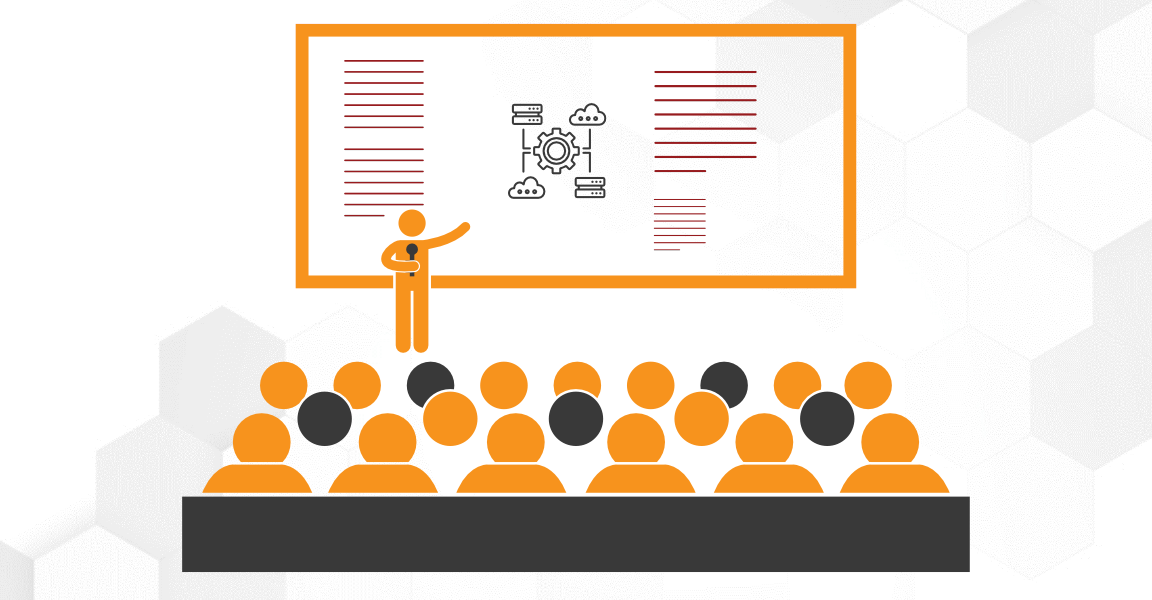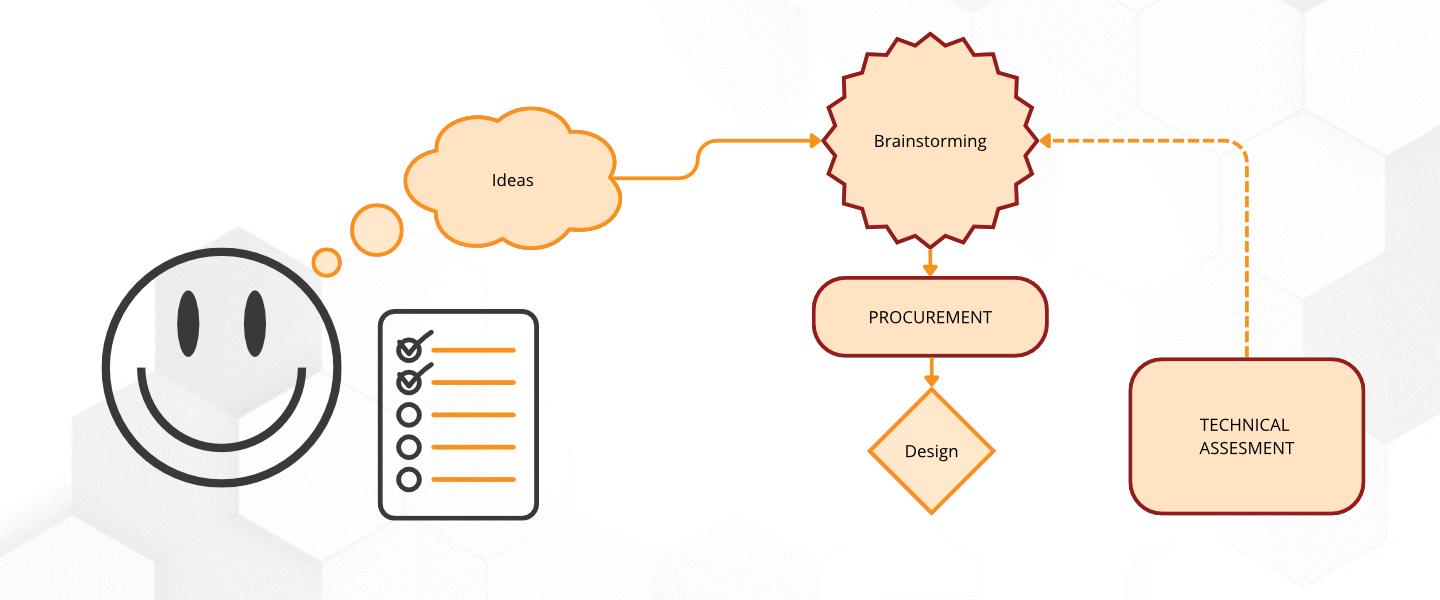
ESB and Business: Key Considerations Before Choosing an Integration Tool
In today's business world, data integration between systems has become a key factor in enterprise success.
Properly implemented integration tools (such as an ESB bus) can help organizations achieve operational fluidity and efficiency. This is particularly important in cases where an organization has multiple specialized IT systems designed to handle specific functional areas. To enable them to exchange data freely, it may be necessary to implement a tool capable of integrating them. Given the importance of such an issue, we will discuss in the following article the key questions that should be asked when selecting an integration tool, focusing on INTENSE ESB data bus.

1. WHAT IS THE REAL NEED FOR INTEGRATION?
The first step in selecting an integration tool is to understand the basic question - why do we need integration?
- Is the organization facing communication problems between applications?
- To what extent are the systems in the organization integrating or expected to integrate?
- In what directions should this integration flow?
- Do the systems in operation in the company have built-in communication interfaces?
- Is investing in the development of an ESB bus expected to streamline business processes through automation?
These are undoubtedly key questions to ask yourself at the outset, as they will determine the next steps and outline the course of action. At this point, I refer you to my earlier article, which describes when the use of an integration tool like an ESB data bus brings the most benefits. ESB (Enterprise Service Bus) integration bus - what you can gain and when to use it.

2. DOES THE ORGANIZATION HAVE A CURRENT AND RELEVANT STRATEGY AND EXPERIENCE IN DATA INTEGRATION?
It is important to have a strategy and experience in data integration. If the previous plan of action included a small number of integrated systems, and the current situation is not able to adapt to this plan - it is necessary to change the strategy and choose a more modern tool.
Most likely, it is the ESB data bus that is the only right way to solve these problems, because it does not limit in any way the number of systems between which information should be exchanged, and additionally reduces the cost of maintaining and operating integration processes.

3. IDENTIFY THE ORGANIZATION'S BUSINESS OBJECTIVES
Before choosing a particular ESB bus solution, an organization should clearly define its business goals, i.e. what it wants to achieve by choosing a particular data bus. Then, among other questions, we should evaluate the offerings of the vendors of a particular integration bus against the following questions:
1. Is the integration bus capable of integrating systems with data of different formats?
2. Is it to support the automation of currently running integrations, or only to integrate data with one specific format?
3. Can it be modified and customized to meet the needs of the organization by both the vendor and the users?

4. DOES THE VENDOR OF THIS TOOL HAVE THE TRAINING AND HUMAN RESOURCES TO SUPPORT THE SOLUTION?
It is also worth considering the availability of support from the software vendor and whether it provides training services related to integration via the ESB bus.
It is very important that the vendor not only provides delivery and support for the implementation of the ESB but also has the right team to support and assist the ongoing work of the organization to maximize the use of the solution.
This support should be provided on both a technical and substantive level.

5. IS THE PRODUCT THE ORGANIZATION CHOOSES DEVELOPED?
No one likes to stand still, and those who are stuck in it end up falling behind.
The solution must be developed not only by the organization that has implemented a particular product but especially by the software manufacturer and supplier.
It is necessary to choose ESB that both meets all the criteria that constitute its selection at the time of the implementation decision, but at the same time one that does not close itself off to the possibility of development.

6. WHAT ARE THE TECHNICAL REQUIREMENTS?
This is not about hardware requirements, although this one is certainly equally important.
This question is intended to inform organization whether the amount of data to be exchanged over the ESB bus, between systems, is already known at the stage of selecting an integration tool.
1. At what time is this data to be transmitted?
2. How many source systems will connect to this bus?
3. What are the prospects for growth of the amount of data exchanged?
4. Equally important are the synchronization requirements looking from the perspective of the source systems - is the tool that is to integrate them flexible enough to cope with any type of file?

7. WHAT IS THE RECEPTION OF A PARTICULAR SOLUTION AMONG OTHER ENTERPRISES?
The opinions of users of different systems can have a significant impact on the choice of an integration tool in any enterprise. An exchange of experience with a company that has already implemented an integration tool can draw attention to some non-obvious aspects related to the specifics of the said solution. Particularly important will be the testimonials of companies operating in the same economic sector and on a similar volume of data, so you can make sure that the choice you make is the right one.
SUMMARY
The selection and implementation of an ESB data bus is a very important decision in the life of any organization. It can significantly affect the efficiency and operational effectiveness of the enterprise. One of the potential choices is undoubtedly INTENSE Platform, whose functional range includes the ESB bus. Adding the other modules of the aforementioned system, we can obtain comprehensive software that will not only allow the registration of various types of objects with their export to external systems but also the independent creation of new elements that can complement the processes operating in the company.

 Unia Europejska
Unia Europejska


